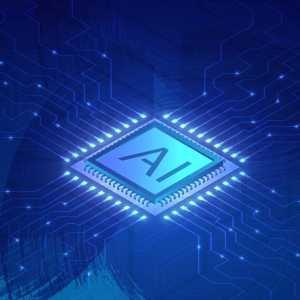The 2025 International Association of Chiefs of Police (IACP) Annual conference served as a premier gathering for law enforcement and partners to share the latest in technology and industry solutions.
Carahsoft and its partners attended to connect on the latest in law enforcement technology.
Five key themes stood out throughout the sessions:
1. AI-Assisted Investigations

In the session “The AI-Powered Investigator: Surfacing Insights in Law Enforcement,” speaker Jeremy Peterson presented on leveraging artificial intelligence (AI) to enhance law enforcement investigations while maintaining compliance and auditability. While AI offers tremendous potential for supercharging investigations, its function as a “black box” means it lacks the transparency required in regulated environments. With the use of multiple specialized AI agents, law enforcement can utilize guardrails and clear audit trails for working within structured workflows, rather than relying on a single generic AI. In one case study, Special Agent Isabella Rossi investigated a multi-state burglary operation, where AI identified connections between stolen crypto-mining hardware and a warehouse fire, helped draft legal documents like subpoenas and generated lookout alerts. Solutions from industry innovators such as Veritone and Tranquility AI are already helping agencies put these concepts into practice, offering AI-powered tools that enable law enforcement agencies to rapidly analyze data and tailor solutions to their specific workflows, expediting investigation processes.
2. Protecting Officers Through Drones

In the panel “Don’t Let Them Go in Blind: Evolving Drones as First Responders to Protect Every Patrol Officer,” speakers discussed the role of comprehensive Drones as First Responders (DFR) for law enforcement. DFR designed with public safety in mind effectively address critical challenges in the field, including staffing shortages, response times and officer safety. Outdoor DFR systems, which are currently operational across multiple jurisdictions with multiple docks per city responding to thousands of monthly calls, have demonstrated the ability to arrive on scene in under two minutes, reduce crime through rapid visual documentation, decrease use of force incidents and clear 20-40% of calls without officer dispatch. New indoor drones address the situational awareness gap that occurs when officers enter buildings, providing capabilities for confined space navigation, perching for up to three hours, two-way communication replacing traditional throw phones, 4K night vision and obstacle avoidance technology. They are all deployable within 30 seconds from a patrol vehicle. The new technology offers remote piloting, freeing officers to focus on incident command rather than drone operation.
3. Instant Translation with AI Services

At the panel “Enhancing Emergency Communications with an End-to-End AI Assistive Platform,” speaker Brad Flanagan, Prepared’s Public Safety Answering Point (PSAP) Ambassador, discussed how AI-powered platforms are improving the efficiency of for 911 emergency call centers by providing comprehensive support and incident resolution. Translation-based AI systems, such as those created by Prepared and Hyper, offer real-time language interpretation in over 240 languages through text, automatic transcription and AI agent conferencing, significantly reducing wait times for interpreters and improving emergency response, including instances where cardiac arrests and domestic violence situations were handled more effectively. The platform consolidates multiple location verification systems into a single interface, reducing address errors from six per month to a timeframe of six months, despite having less experienced staff. AI translators enable rapid incident review and reporting by automatically organizing call recordings, radio traffic and transcripts, reducing review time. The current system includes AI-assisted call triage during high-volume situations, post-call performance analysis within two minutes, live guidance for call-takers on protocol-specific questions and training simulations for staff development. AI platforms provide field responders and administrators with real-time data insights and analytics to improve emergency response quality and efficiency.
4. Cybersecurity in the Modern Age

During the session “Cyber Threats to Critical Communications Systems,” speaker Travis Randall discussed the evolving cybersecurity threats that Public Safety organizations face. Agencies are increasingly vulnerable due to their combination of sensitive data and critical high-availability systems, such as dispatch, 911 and radio networks. The primary threat is ransomware groups, who often operate through a sophisticated criminal ecosystem of developers, affiliates and access brokers, conducting attacks at scale that have significantly disrupted emergency communications. Randall details how these attacks typically exploit valid credentials, unpatched vulnerabilities, misconfigured VPNs and weak access controls to compromise networks, often using legitimate system tools rather than obvious malware to evade detection. To stay on top of ransomware groups, agencies must employ essential defensive measures like offline backups, multi-factor authentication, privilege management, vulnerability patching and continuous network monitoring.
5. Improving Awareness with Real-Time Crime Centers
In the session “Real-Time Crime Centers: A Real Possibility for Small and Midsize Agencies,” speakers Chris Henningsen, President at the National Real Time Crime Center Association, and Chris Settle, Police Chief of Culpeper Police Department, discussed the operation of real-time crime centers. The speakers emphasize that real-time centers serve as technology hubs providing situational awareness and acting as force multipliers during staffing shortages, are attainable for agencies of all sizes. Centers can start small with minimal resources, such as a computer, radio and analyst, and scale over time based on demonstrated successes and measurable outcomes. Key components include integrating existing resources like traffic cameras, body-worn cameras, license plate readers, drones and community partner camera feeds to provide officers with critical information before arriving at scenes, often achieving response times of seconds rather than minutes.

Some of the benefits include that real-time crime centers can:
- Reduce investigation time with camera networks and LPR technology
- Enhance recruitment and retention by demonstrating technological investment and officer safety support
- Enables officers to connect with back-up support, who can view footage and provide aid in real-time
Henningsen and Settle stress that effective implementation requires cross-training staff, tracking progress through data analytics and continuously pursuing partnerships with technology vendors, such as Flock Safety, to share resources and best practices.
Maintaining pace with the evolving technology landscape ensures that law enforcement and confidential data remains protected. Through AI, real-time crime centers, drones and ransomware protection, law enforcement remains committed to protecting civilians.
Missed IACP Annual? Attend Carahsoft’s 2026 law enforcement innovation summit to learn more about the latest technology and solutions in law enforcement.














